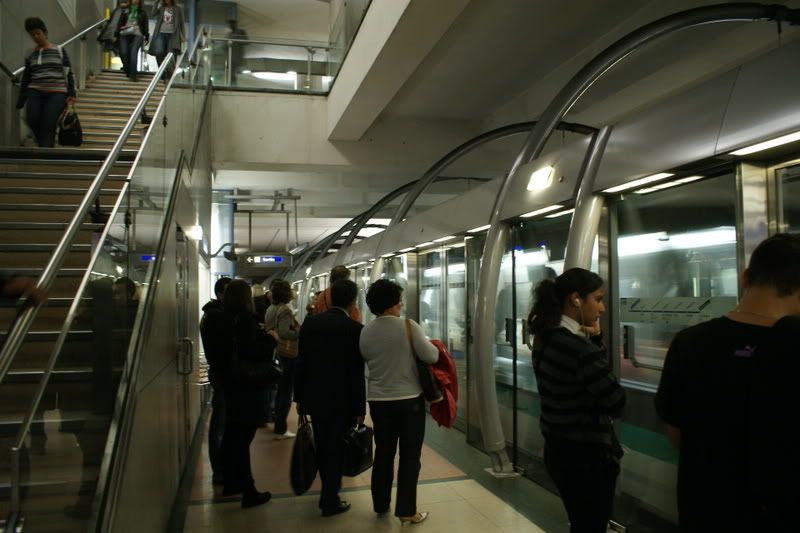jks
Continuous Lurker
Wow, personally, I'd prefer this to full-length platform screens. The safety aspect is still there, but it's not claustorphobic.

Yeah, that's exactly what they would do. I'd think you'd need the doors at least 5 to 6-ft high. I can see not wanting to go full-height, for various mechanical and air-flow issues, but half-height is going to cause incidents.Wouldn't half height platform screens convince people to lean on them? Personally, I think the risk of being randomly pushed onto the subway tracks is less than someone (drunk or otherwise) from getting their neck snapped by a passing train.




The Seattle Monorail has half-height gates about 1-metre high - and I assume they have been there since the 1950s. And I'm sure that isn't the only example ... off the top of my head don't both the Disneyworld peoplemover and the Houston Airport peoplemover use about 1-metre high gates?The only reason why HK's Disney Line (the first line in the world to use half-height) used 1-m gates, as depicted in these renderings, is to avoid blocking the special features on the Disney trains.
I don't think these:The Seattle Monorail has half-height gates about 1-metre high - and I assume they have been there since the 1950s. And I'm sure that isn't the only example ... off the top of my head don't both the Disneyworld peoplemover and the Houston Airport peoplemover use about 1-metre high gates?



Not automatic - but the heights and related safety issues are similiar - though in my experience, both vehicles enter the stations much slower than a subway train.I don't think these, nor these, would qualify to be discussed in the same category as PSDs or APGs (automatic platform gates).
They aren't, but you can see in the photo, that the wall next to the train, and adjacent to both the train, and the passengers waiting IS half-height - and thus the same safety issue exists - but likely slower speeds than a subway train.
the "gates" themselves (if they can be considered as such) are not half-height.
^ that's the picture in my post I linked to above
Agreed, I was referring more to the fact that HK's was the first half-height platform gate of the type relevant to our discussion (with the automation and control) rather than just a flimsy metal or plastic barrier.Not automatic - but the heights and related safety issues are similiar - though in my experience, both vehicles enter the stations much slower than a subway train.
They aren't, but you can see in the photo, that the wall next to the train, and adjacent to both the train, and the passengers waiting IS half-height - and thus the same safety issue exists - but likely slower speeds than a subway train.
I thought it had more to do with the decceleration being done before the station is entered - partially because the trains are so short.And yes, monorails and people movers are basically "light rails" that have lower speed and momentum then normal metro, so the risk of getting your head chopped off really is minimal.
Really? Do you have data about the operating speeds of the two trains?I thought it had more to do with the decceleration being done before the station is entered - partially because the trains are so short.
LRT can be just as fast as subway; the SRT (which I guess isn't true LRT) runs faster than the subway.




